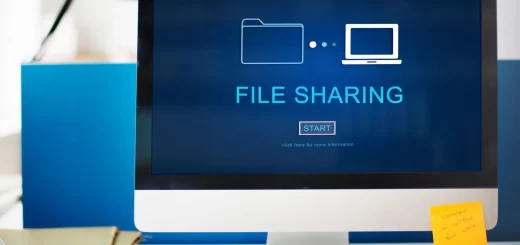6 Practices for Effective Project Team Collaboration

Project team collaboration entails having a group of people working towards one objective, and it’s an integral part of the project management success of any organization. For instance, a company may require inter-department collaboration for software development, product launches, marketing campaigns, and other significant events. Some organizations also need employees to interact regularly or coordinate with other members in their daily tasks or activities.
More companies have transitioned to remote or hybrid work setups in recent years, which requires effective team collaboration between project stakeholders. With physical distance, time differences, and changes in work locations, it can be challenging for project managers and business decision-makers to ensure efficiency and productivity among team members. However, good collaboration is possible with proper planning, strategy, and tools that would make operations smooth and hassle-free for everyone.
If you’d like tips on how your organization can adopt effective project team collaboration practices, continue reading this article.
The Importance of Team Collaboration in Project Management
Before we talk about practices for building a collaborative environment, let’s discuss why team collaboration is essential. Without collaboration, your project will likely fail. It takes a team’s combined ideas and works to pull off a complex project, innovate, and come up with products that beat the competition.
There are three reasons that make team collaboration essential for managing projects:
People working together have more inputs and ideas to come up with better project management solutions.
Several group ideation techniques, such as brainstorming, mind mapping, gap analysis, and SWOT analysis, can help bring unique perspectives and creative ideas to the team. These tools are widely used in the kick-off meeting, regular status updates, and other team sessions to keep everyone on track and ensure a shared understanding of the project goals.
Collaborative teamwork builds a sense of unity, trust, and commitment.
The success of a project can depend on how well the team members work together and trust each other. It’s always easy to let your teammates down or create tensions when you’re working independently or out of sync with other team members. So, it’s very important to encourage open communication, honest feedback, and transparency with your team.
Team members are more motivated to contribute when they feel that their thoughts and ideas matter.
In a recent study by researchers at MIT, employees were asked to participate in a series of mental exercises or puzzles, either alone or with a collaborative team. Results showed that when an individual did the puzzle alone, he or she was much more likely to want to solve it straight away than when he/she did it with a team. When the individual tried solving the puzzles in a group, they found themselves unable to concentrate on their own task and instead helped each other out.
According to this research, when working in a group, we are motivated to help others in the group, and it makes us want to take action immediately. This collaboration drive leads to better results in team effort and individual tasks.
Effective Project Collaboration Practices for Teams
Now that we have an idea of why team collaboration is essential for project management let’s learn about the various practices that would help you build a collaborative environment for your team in IT outsourcing, for example.

1. Promote Healthy Working Relationships Among Team Members
Trust and comfort are essential in collaborative work, so it’s wise to invest in activities that will help build camaraderie and positive work relationships among your team members. Doing so will help them get to know each other and reach a level of comfort that would foster healthy collaboration when they work together on future projects.
Some managers foster team-mindedness and camaraderie among employees by hosting gatherings such as team building, family days, or simple get-togethers outside work. Others also host remote team-building activities to cater to members with this work setup. Meanwhile, you can also work on building healthy working relationships among employees by doing daily or weekly activities together, such as playing games or sharing meals.
2. Provide Different Communication Channels
Communication plays a vital role at work, especially when team members are required to work collaboratively. Members may need to get in touch with one another more often while working on a project, so they’ll need something easily accessible and user-friendly. For those working remotely or in a different time zone, having sufficient communication channels is critical as it allows them to stay connected and engaged with the project when and where needed.
To enhance the effectiveness of your collaborative work, you’ll need to provide multiple channels for communication that would cater to the needs of your team members. Aside from the communication platforms, you’ll also need to set guidelines for meetings and dialogues so that everyone will have the right expectations. Doing so will ensure that the communication channels will be used accordingly and the resources will also be optimized.
3. Use Project Team Collaboration Tools
Apart from communication channels, you can also use digital collaboration tools to streamline work processes. These tools will allow your team members to access files and documents conveniently, monitor reports and task progress, set up meetings, and receive notifications for any updates. Many of these tools also have versions compatible with mobile and desktop use, making them ideal for any work setup.
To optimize your collaboration tools, you’ll need to ensure that all members are familiar enough with their primary functions to allow them to use the applications regularly. Moreover, the tools you select should be available to your remote team members’ locations so they can access them conveniently. Finally, everyone should use the same application version to avoid delays or errors.
4. Foster a Healthy Exchange of Ideas and Feedback
Working with a team opens the channels to various perspectives, opinions, observations, and assessments. With many ideas being shared, you’ll need to create a system where everyone can share their thoughts without exceeding time limitations. It’s also essential to highlight the importance of receptiveness to feedback, flexibility, and willingness to compromise. This way, everyone will feel heard and valued as they make their contribution, and you’ll be able to stick to your project timelines as well.
To optimize the exchange of ideas within your team, you can create communication channels dedicated to sharing insights, timely feedback, and other concerns related to your project. With this, everyone can monitor and evaluate various aspects of the tasks at hand and suggest ways to make improvements as required.
5. Manage Team Conflict Effectively
Conflict can be considered a natural part of project team collaboration. Your team members can come up with contrasting observations and ideas, and these differences sometimes ignite conflict. However, it’s vital not to get distracted by issues and swiftly deal with problems at hand to optimize your collaborative efforts. Finding a quick and effective resolution of the matters and conflicts is essential to moving forward with your plans.
Here are some of the ways you can manage conflict within your team effectively:
- Identify the reasons why the dispute arose.
- Focus on the issue and remain objective.
- Communicate with all parties involved.
- Encourage team members to work together towards a resolution.
As a leader, you’ll also need to consider that not all conflicts may have an immediate resolution, and it’s acceptable to put discussions to rest until the project is completed. As a result, you won’t spend an extended period working towards resolving a conflict and will remain focused on the tasks.
6. Offer Rewards and Recognition for Collaborative Efforts
Showing appreciation for your team’s hard work is a great way to keep everyone engaged and motivated to perform well at work. To ensure that your team will remain focused on collaborative work, you can gear your rewards and recognition system towards giving more value. For instance, you can offer compensation for groups working well together and delivering results to show everyone that collaboration is appreciated in your company.
Moreover, while it’s essential to recognize individual successes and give merit to people who stand out from the rest, it’s also wise to show employees that their ability to work with others contributes to the organization’s overall success. This way, you’ll motivate members to work on both aspects of their performance and boost productivity.
Conclusion
Your team’s collaborative efforts can significantly influence the success of your projects. Given the right practices, effective strategy, and cooperation, your team will be able to work harmoniously and bring excellent results. Furthermore, team members need to understand the project goals and timelines and their responsibilities in its completion. Finally, effective project team collaboration practices require accountability, trust, receptiveness to feedback, and healthy communication among members.











